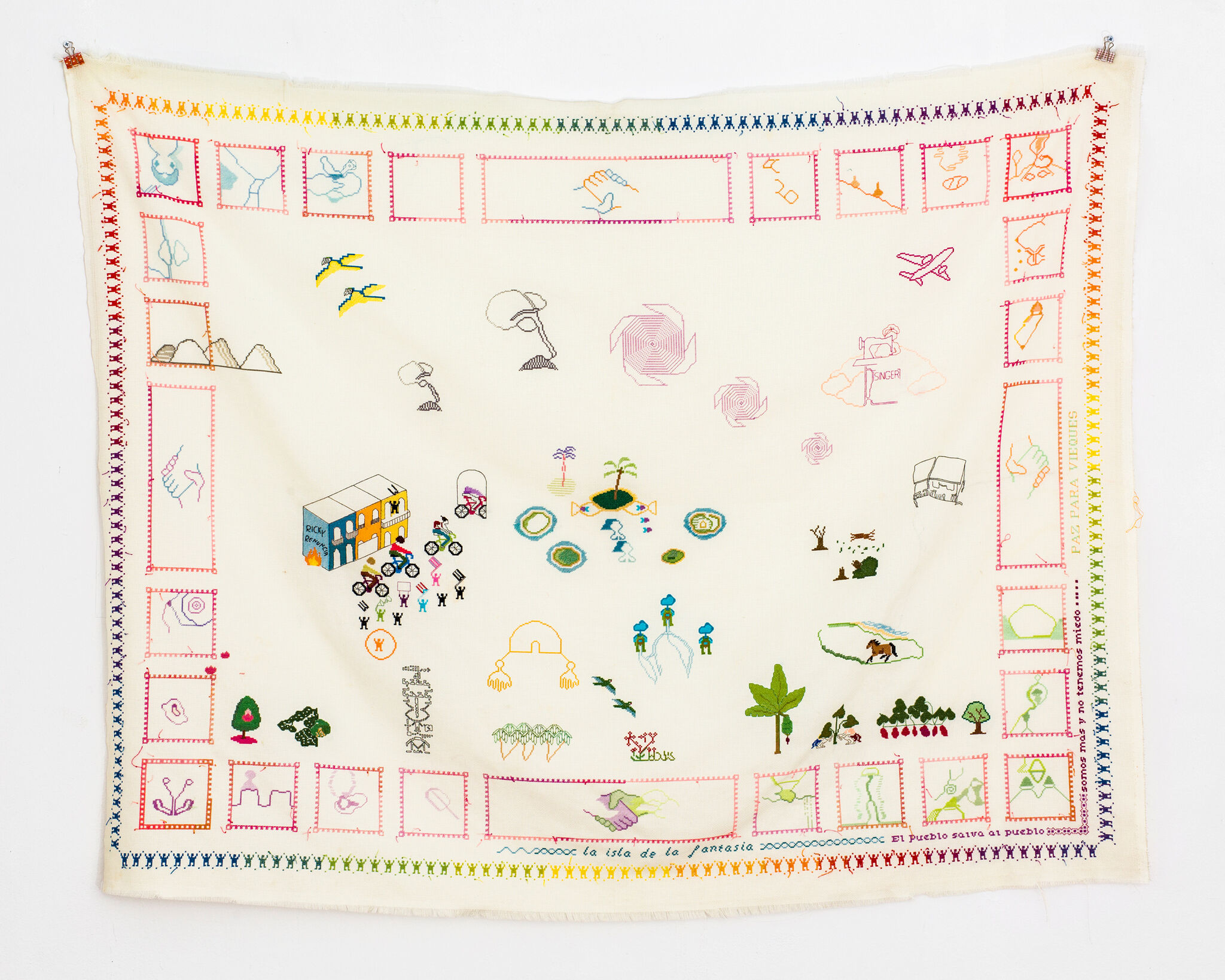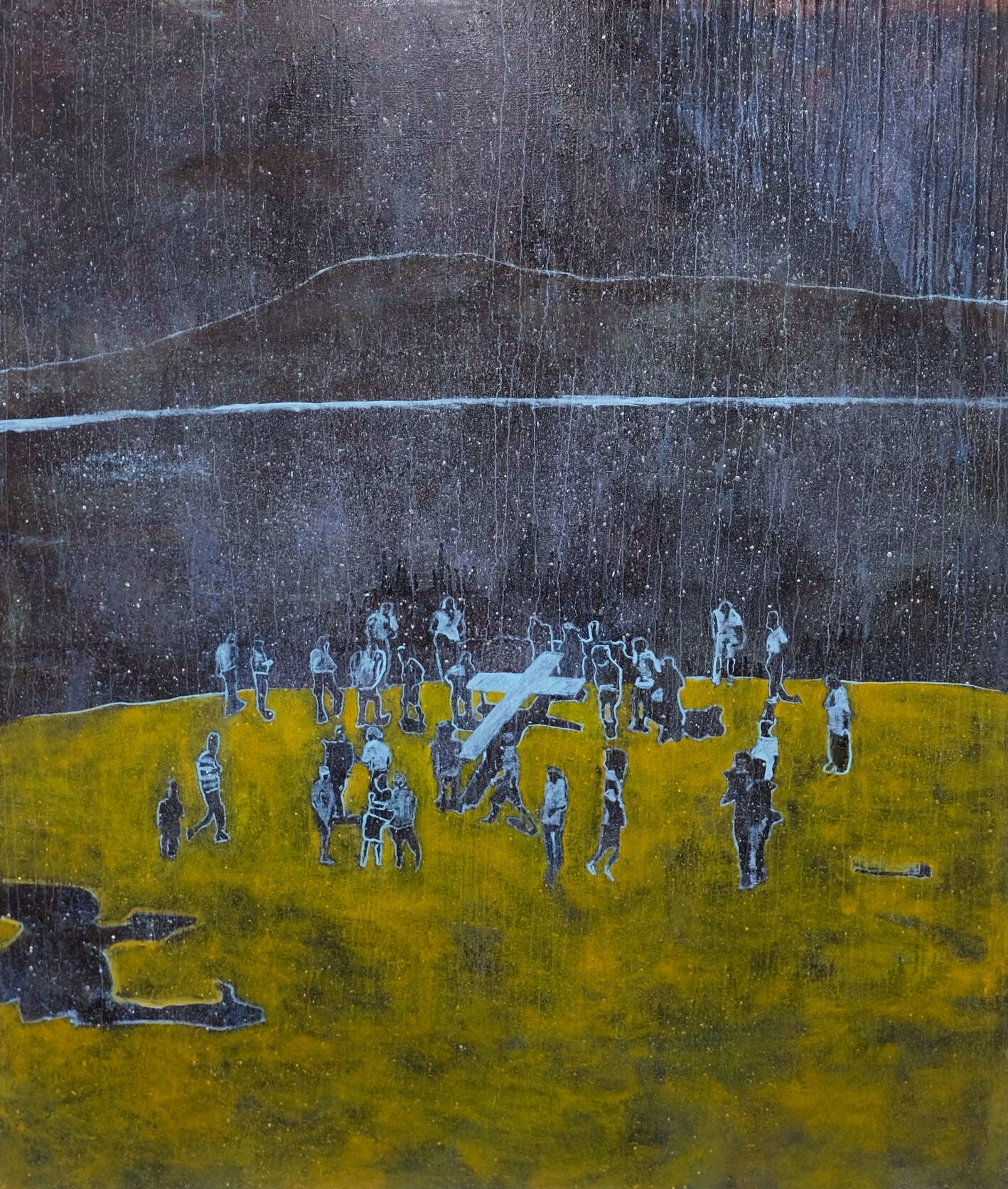Personal and Social Histories
How might you question histories?
Puerto Rico is an “unincorporated territory”—in other words, a colony—meaning that it belongs to the United States but is not part of it. Puerto Ricans are granted some rights as U.S. citizens and not others. For example, Puerto Ricans can send a non-voting representative to Congress and cast votes in presidential primaries, but cannot vote for president.
This colonial status has a long and problematic history. In 1898, during the Spanish–American War, the U.S. Armed Forces invaded and occupied Puerto Rico, making it a possession of the United States. In 1917, Congress passed the Jones-Shafroth Act, granting Puerto Ricans U.S. citizenship and making Puerto Rican males eligible for the military draft in World War I. In 1948, Congress passed an act permitting Puerto Ricans to elect their own governor. Four years later, Puerto Rico would officially become a U.S. commonwealth.
This intermediate status affects contemporary Puerto Ricans in all aspects of their lives, including education, currency, the importing of essential goods, and government, placing the populace in a vulnerable position. Although some governmental decision-making occurs on the local level, other important aspects of governing are determined by lawmakers in Washington, D.C., which delays responses to crises and removes autonomy from the residents themselves. To date, Puerto Rico’s future is actively being debated by the U.S. Congress. Against this historical and current backdrop, no existe’s artists foreground both personal and political narratives, often intertwining the two.
Read more about the debates regarding Puerto Rico’s status.
Activitiy
Show students the exhibition video Episode 1: Territory. Have them discuss the artists’ reflections on what it means to be Puerto Rican today. Ask students to share the places that have had an important impact on their families, identities, and how they think about themselves. Encourage them to research these territories and look into their original and changing inhabitants and current conditions. Invite them to devise proposals, to be executed in the medium of their choosing, to ensure the stories of their families, peoples, or countries will be passed down 1,000 years from today.
Lulu Varona
Pronouns: she/her
“As I’m stitching, I create the stories. That’s how they’re done.” —Lulu Varona
María Lucía Varona, who goes by the nickname Lulu, was born in 1993 in San Juan, Puerto Rico. She holds a BA in Visual Arts from the University of Puerto Rico. In her work, she uses embroidery techniques to tell stories and address contemporary concerns.
Varona created the cross-stitched artwork Mapa after being displaced from Puerto Rico to New York following Hurricane Maria. The piece depicts the diverse political, social, and environmental landscapes of Puerto Rico, with references to personal memories, hurricanes, and scenes drawn from 2019 political protests where hundreds of thousands of people protested then-governor Ricardo Rosselló. Along the borders, Varona embroiders phrases such as “El pueblo salva al pueblo” (“The people save the people”), a rallying cry that speaks to the sense of government abandonment felt by many Puerto Ricans and the need to rely on one another as a means to survive. The map’s cardinal directions are marked with pairs of clasped hands.
Activities
How would you "map" a personal experience or journey?
Lulu Varona's approach to storytelling in her maps is inspired by graphic novels and, as she describes it, the “need to return to my land.” Ask students to think about a short or long journey they’ve taken in their lives. They could choose their daily trip to school or even a trip to another city or country. Encourage students to share with peers the sites, sounds, scents, and emotions they remember encountering during their trips. In the medium of their choosing, have them create images that “map” out their memories.
How would you share creative traditions?
As a child, Lulu Varona spent hours after school and on weekends learning cross-stitching from her grandmother, and she is now studying traditional Puerto Rican lacemaking. Have students think about family members and other loved ones and the creative traditions they engage in such as carpentry, knitting, or cooking. Invite students to interview a selected individual about their craft. Encourage them to ask how they began, what influenced them, and what they’d like to pass on to others. Have students create presentations for their classroom peers to share the insights they gained and demonstrate a skill or technique they learned.
How could you creatively merge reality with dreams?
Lulu Varona's stitched maps combine imagery inspired by post–Hurricane Maria realities in Puerto Rico along with hopeful symbols for the future. In describing her maps, Varona explains, “It’s like my dream, my desire to acknowledge details about the things that happen to me, that are all around me, and to mix reality with my dream and my fantasy reality.” Encourage students to think about circumstances in their realities that impact them and consider ideal outcomes. In the medium of their choosing, have them create artworks that communicate both their present and their imagined futures.
How would you question unjust realities?
An estimated 130,000 people, including Lulu Varona, left Puerto Rico in the aftermath of Hurricane Maria, according to the U.S. Census Bureau. This constitutes almost 4% of the population. Have students select and discuss a historical moment or event they've learned about that has made an impression on them. Challenge them to narrow down the key images, words, symbols, numbers, etc., that they consider necessary to create a pictorial history map that could help teach others. Invite them to share their maps and artistic decisions with other students.
Armig Santos
Pronouns: he/him
“These images, these stories … should be present in our history.” —Armig Santos
Armig Santos was born in Caguas, Puerto Rico, in 1995. He received a BFA in Painting from the Escuela de Artes Plásticas y Diseño de Puerto Rico in San Juan. His art often focuses on overlooked but important moments in Puerto Rican history.
Santos based Procession in Vieques III on journalistic images he found online of protests sparked by a fatal bombing during U.S. Naval exercises on the island of Vieques, which is part of the archipelago of Puerto Rico. In the 1940s the US Navy occupied two-thirds of the island for use as a bombing range and weapons depot, leaving the people of Vieques with less than one third of their land. On April 19, 1999, errors on the part of U.S. Navy personnel killed David Sanes Rodriguez, a civilian security guard, who died instantly when two 500-pound bombs struck fifty feet away from him. Prior to his death, Puerto Ricans had been protesting the navy's presence and the adverse effects of heavy metals and toxic substances on the island’s residents. The tragedy galvanized massive civilian protests and inspired land occupations, which led to the U.S. Navy abandoning its base in Vieques. Santos describes his painting as “a highly optimistic image, but it’s filled with great sadness.”
Activities
How could you change perspectives of a place?
Santos’s artwork foregrounds a transformative historical moment in Vieques, which differs from glossy tourism photographs or catastrophic post-hurricane imagery of the island. Encourage students to think about how their neighborhood or community is seen by outsiders or portrayed in the media. Ask them to consider if their viewpoints differ from others' portrayals and what they would want to present and highlight about their surroundings. Have each student create their own representative image of their neighborhood or community that might counter others’ perceptions.
How would you retell a visual story?
Armig Santos based his painting on newspaper images he found on the internet of events that took place on the island of Vieques when the artist was a child in 1999. Ask students to research images from newspapers, magazines, or online media that depict current events that happened in their early childhood and are important to them. Have them discuss their selected images, paying attention to possible biases of perspective. Encourage them to transform their original images to question the point of view or present an alternative message. Have students write captions for their works and discuss the reasons behind their artistic choices.
How would you portray a natural wonder?
The U.S. Navy’s activities had a toxic impact on Vieques’s ecosystems. In contrast, Santos uses painterly techniques to spotlight the island’s bioluminescent bay. Bioluminescence is the biochemical light emitted by living organisms such as fireflies and deep-sea fishes. The artist explains, “If you look at the paintings, they both have the effect of bioluminescence, since there is a bioluminescent bay in Vieques, which for me is the most important place spiritually in Puerto Rico.” Encourage students to research scientific phenomena and sites that fascinate them. Ask them to create an artwork that communicates their excitement about the subject.
How would you incite change?
Armig Santos’s paintings are inspired by successful people-led actions, land occupations, and uprisings in response to the unjust killing of David Sanes Rodriguez by the U.S. Navy. Have students discuss civilian-driven movements they are familiar with such as Black Lives Matter, #MeToo, Occupy Wall Street, and youth-led global climate strikes. Encourage them to think about which pressing issues are on their minds. Ask them to devise a campaign that attracts the public’s attention to their causes. Their efforts could entail writing letters to their local government representatives, devising petitions, organizing actions, or public service announcements.
Additional Resources
José Jiménez-Tirado Photography: Slideshow of photographs of Vieques’ protests
Her Campus: Interview with Lulu Varona


